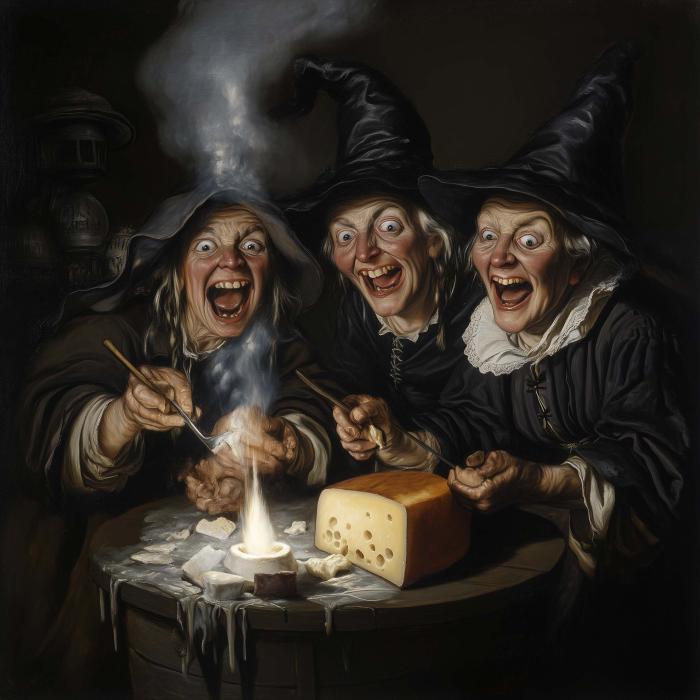How has Halloween Influenced Cheese Throughout History?
OCTOBER 29, 2024

One of the most surprising aspects of cheese history is its connection to superstitions and rituals, common elements of Halloween lore. For centuries, cheese has been more than just nourishment; it has played a role in various cultural rituals, including those associated with supernatural beliefs. In medieval Europe, for instance, cheeses were often used in rituals to ward off evil spirits or bring good luck. These customs were rooted in the belief that cheese, being a product of a magical transformation process (curdling milk with rennet), possessed special powers.
The Black Death, a pivotal event in history, significantly impacted the production and consumption of cheese. During the plague years, the population declined dramatically, and many traditional cheese-making regions in Europe were severely affected. Entire villages were decimated, including cheese-makers whose artisanal skills were lost forever. However, this decline in population also led to changes in land use, with some areas converting from arable farming to pastureland, which eventually revitalized cheese production post-plague. This resurgence coincided with the Renaissance, a time of cultural renewal and innovation, including advancements in dairy science that improved cheese quality and variety.
Moving forward to the early modern period, one cannot overlook the influence of the 17th-century witch trials on cheese. There were widespread beliefs that witches used dairy products in their dark rituals. Accused witches were often blamed for the spoilage of milk and cheese, reflecting the era's blend of superstition and limited scientific understanding. This period also saw the emergence of hard, aged cheeses like Cheddar, which became popular due to their longer shelf life and reduced risk of contamination, a practical response to the fear and scarcity caused by these tumultuous times.
Fast forward to the 19th century, the Industrial Revolution brought significant advances in cheese production. Improved transportation and refrigeration technologies allowed cheese to be produced in large quantities and reach broader markets. However, this period also saw the rise of 'cheese adulteration,' where unscrupulous producers added harmful fillers to increase volume and profit. This led to public outcry and eventually the development of food safety regulations. Interestingly, this era's fascination with the macabre—Victorian society's interest in death and mourning—found a parallel in the meticulous and somewhat eerie precision of industrial cheese factories.
Modern Halloween celebrations, characterized by a blend of ancient Celtic traditions and contemporary customs, often feature cheese in various forms. Cheese platters with themed decorations, pumpkin-shaped cheese molds, and haunted cheese-tasting events are popular. These modern culinary trends reflect cheese's enduring presence in cultural celebrations and its ability to adapt to and enhance festive occasions.
In conclusion, the historical evolution of cheese is richly intertwined with significant events and cultural practices that resonate with the themes of Halloween. From medieval superstitions to the harsh realities of plague and witch trials, each epoch has left its mark on the world of cheese. As we celebrate Halloween with contemporary cheese feasts, we are participating in a tradition that stretches back through the annals of history, reminding us of cheese's enduring magic and cultural significance.
More in History
November 11, 2024
How Are Veterans Contributing to American Cheesemaking?
October 29, 2024
How has Halloween Influenced Cheese Throughout History?
June 03, 2024
What Makes Florette Cheese a Modern Culinary Marvel?
May 20, 2024
How Did Smoked Gouda Cheese Become a Culinary Staple?
May 17, 2024
How Has Memorial Day Influenced the Evolution of Cheese?
March 09, 2024
Did St. Patrick's Day Traditionally Feature Green Cheese?
March 07, 2024
How Easter Traditions Shaped Cheese-Making History
February 29, 2024
Discovering the Essence of Smoked Gouda: A Journey Through Time